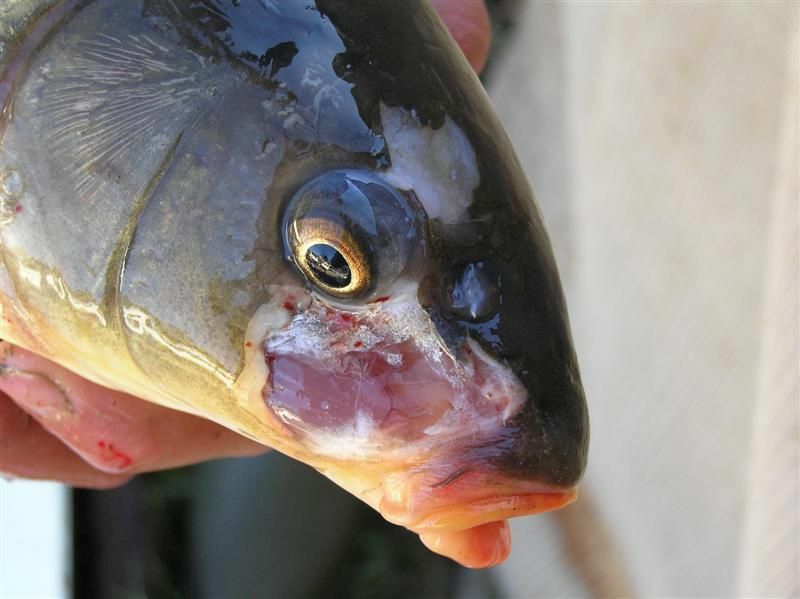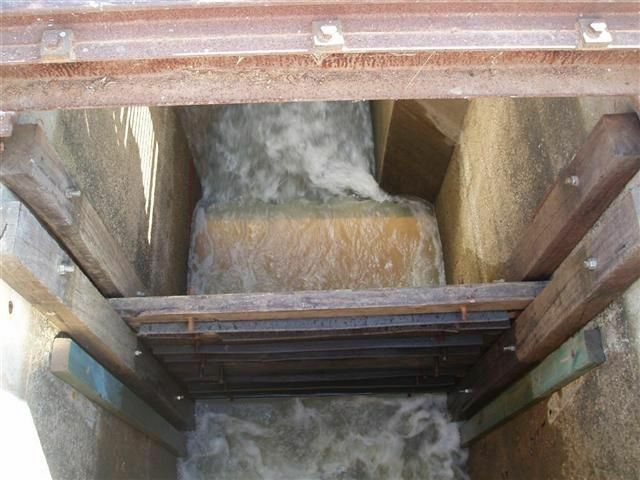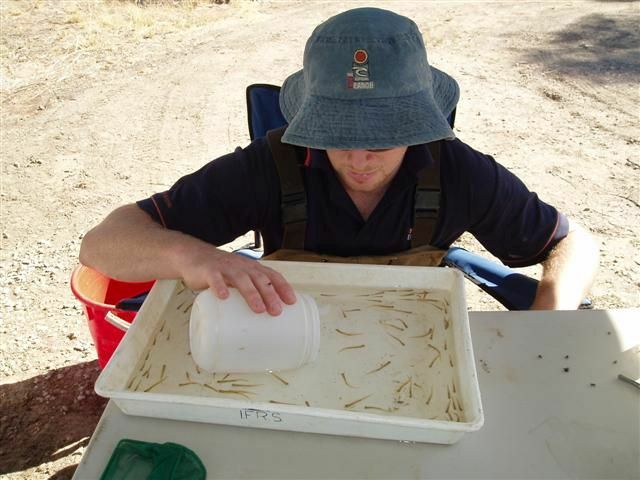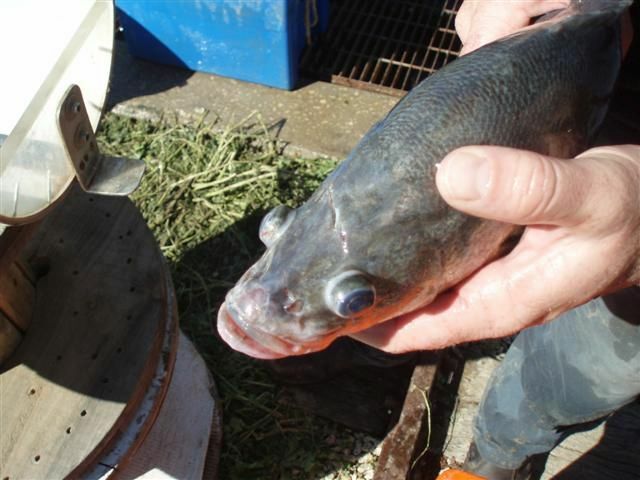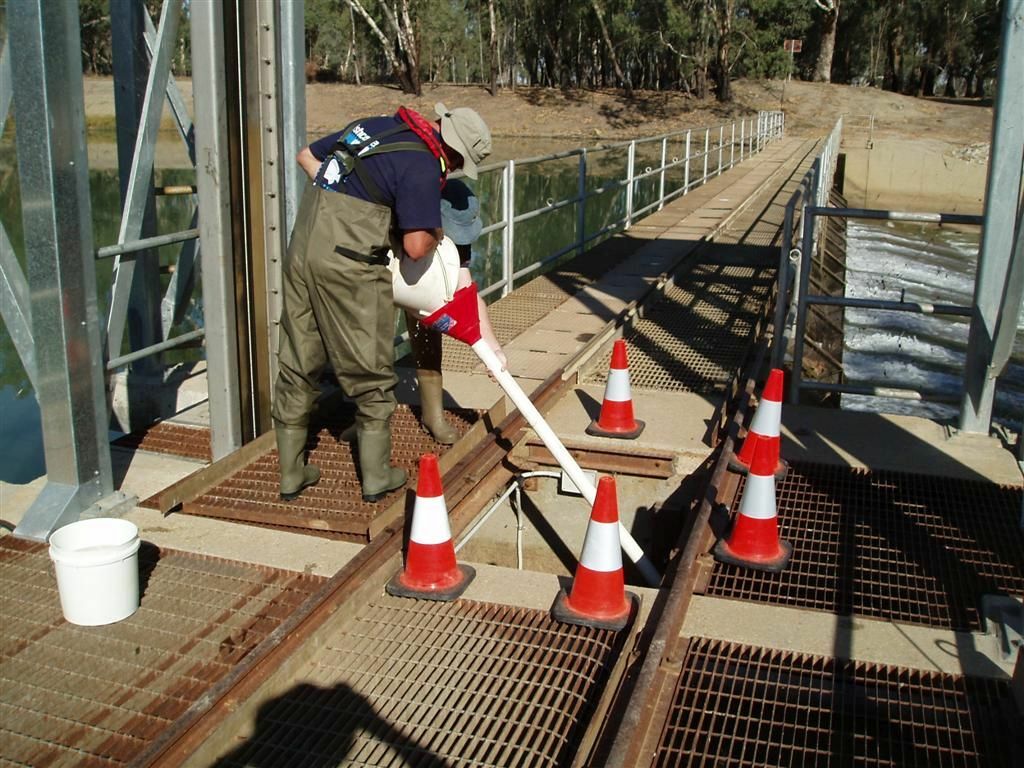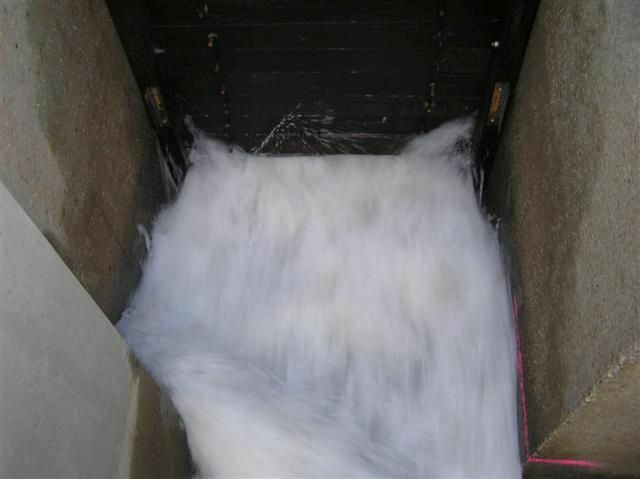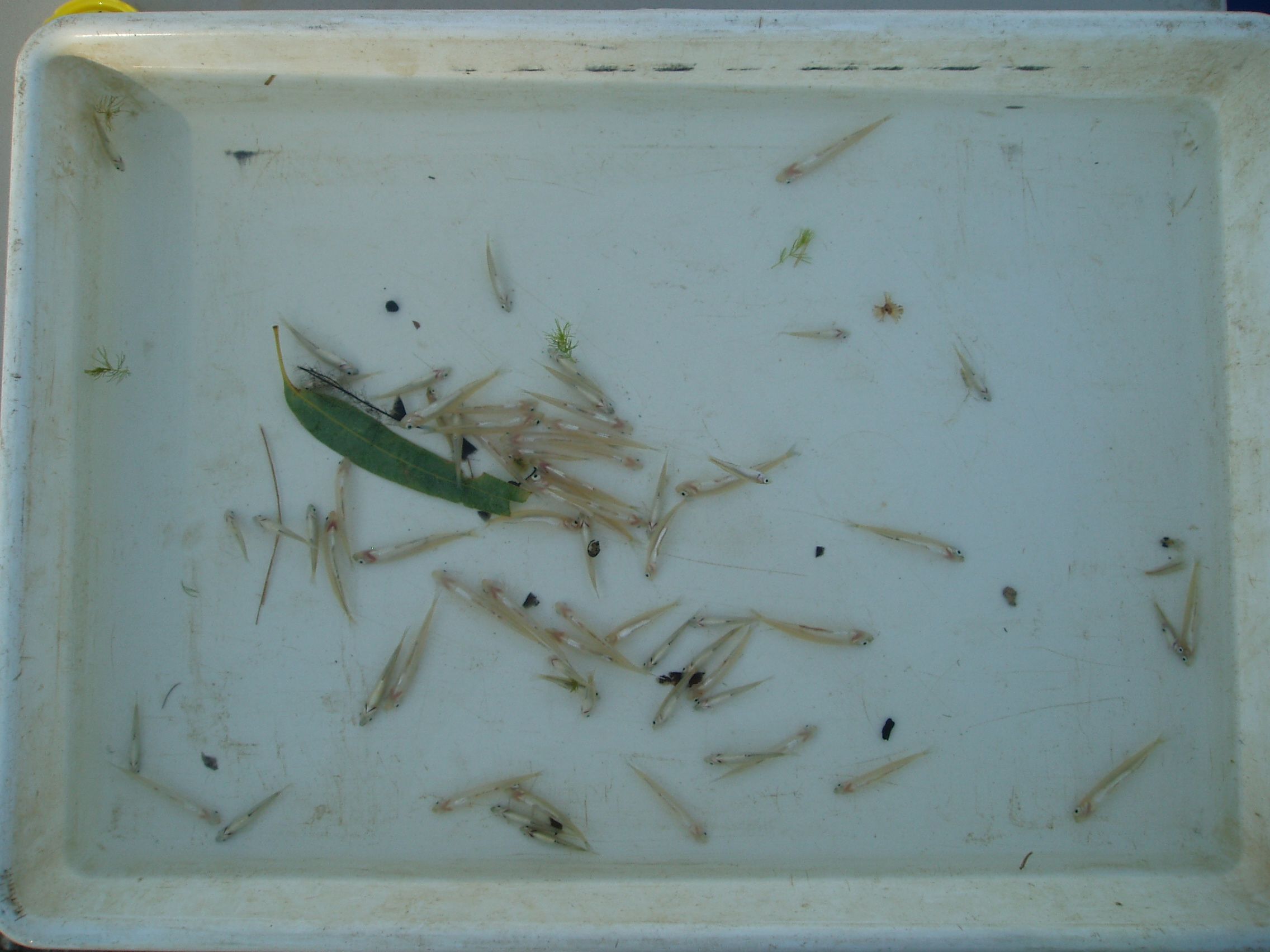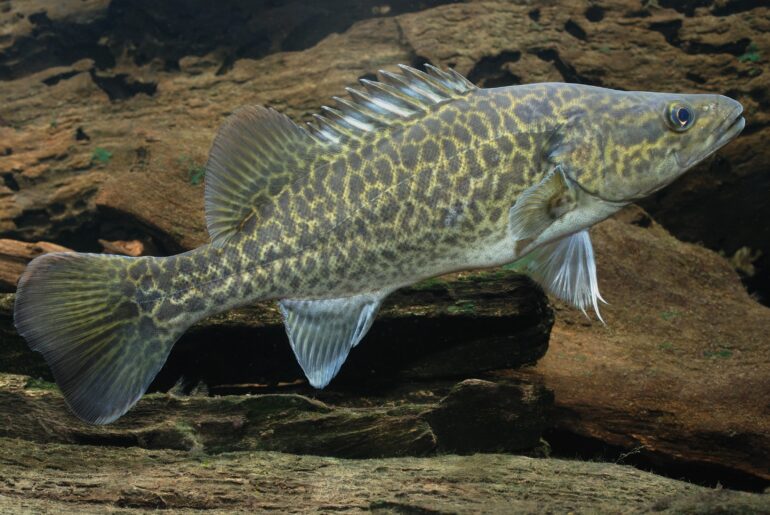There are an estimated 10,000 dams and weirs installed in the Murray-Darling Basin (MDB). Two major weir designs, undershot and overshot, are constructed on MDB waterways, both delivering water downstream in a different way. Overshot weirs deliver water in a water-fall effect, and undershot weirs release water from under a sluice gate. A controlled field study aimed to determine the impacts of both weir designs on downstream fish passage of common MDB fish species at a range of flows to determine fish welfare impacts.
Findings:
Passage through overshot weirs was associated with substantially greater survival in all species compared to undershot weirs. Few fish died, and the main welfare issues arose when water from overshot weirs fell into shallow water, causing fish to become physically injured when impacting the downstream weir apron. These results indicate that the construction of overshot weirs with deep plunge pools would provide safe conditions for many fish species and sizes moving downstream.
In contrast, most Golden perch (Maquaria ambigua) and Silver perch (Bidyanus bidyanus) larvae, and more than half of Murray cod (Maccullochella peelii) larvae died during undershot weir passage, regardless of tailwater depth. Small-bodied native fish such as Australian smelt (Retropinna semoni) and Unspecked hardyhead (Craterocephalus stercusmuscarum) displayed extremely high mortality when passing through undershot weirs.
Adult life stages of large-bodied species were also affected by undershot weirs but to a much lesser degree, with most adult Golden perch and Silver perch and a third of Murray cod suffering minor injuries when passing through small gate openings. Analysis determined that undershot weirs were characterised by higher values of shear, turbulence and pressure changes. Modifications were made to undershot gates to try and reduce these impacts, but unfortunately none of the trials successfully mitigated effects on native fish.
Key messages:
The findings of this study are particularly relevant for the MDB, given that over 80% of main channel weirs in most inland rivers now use undershot weirs. Continuing upgrades to undershot weir structures in smaller creeks and tributaries will certainly improve water delivery efficiency, but may substantially increase incidences of injury and mortality of native fish over a large spatial scale.
Options to design and fit undershot weirs with ‘fish friendly’ flow modifications should be explored to minimise these threats to native fish. Alternatively, assessing the applicability of stationary screens may represent a useful method for preventing fish entrainment and subsequent injuries. It is important that any such structure could protect all life history stages and have applicability over a large spatial scale. These should be seen as a priority area for future native fish management work.
Full report here: Baumgartner, L., McPherson, B., Doyle, J., Cory, F., Cinotti, N. and Hutchison, J. 2010. Quantifying and mitigating the impacts of weirs on downstream passage of native fish in the Murray-Darling Basin. NSW Department of Industry and Investment, Narrandera.

